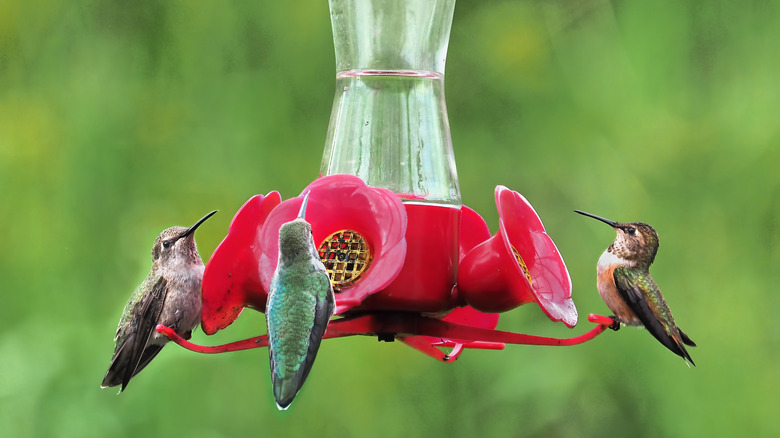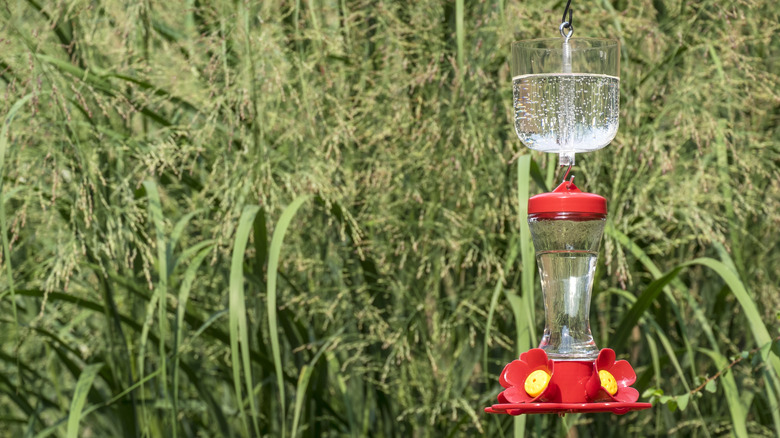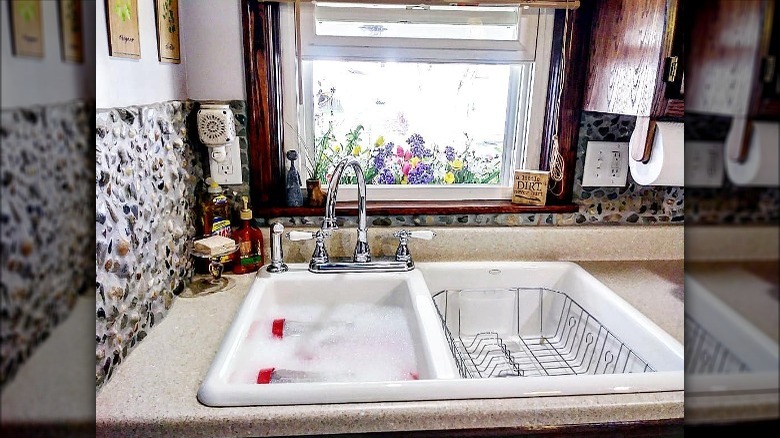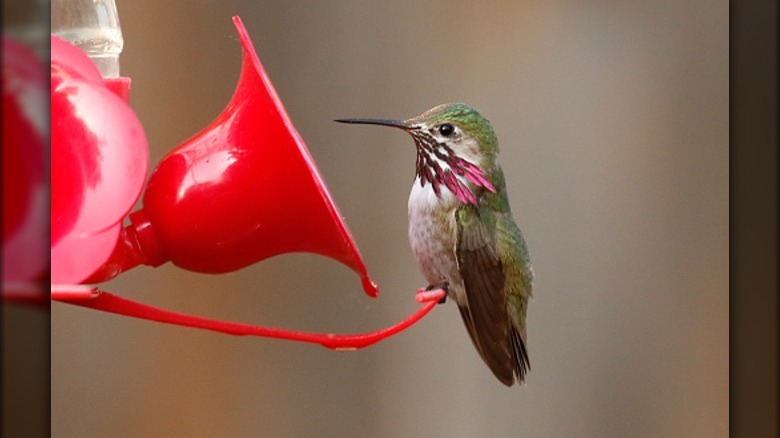How To Safely Clean Your Hummingbird Feeders
We may receive a commission on purchases made from links.
Some species of hummingbirds travel around 4,000 miles a year to get to and from the warmer climates of Mexico and Central America where they spend the winter. As spring nears, they make their return trip to the U.S. and Canada to breed and raise their young. As hummingbirds make these long trips, they need access to clean, safe food sources.
If you've had hummingbird feeders, you might have noticed how often these speedy feathered friends show up for a meal. Although their diet consists of nectar from flowers as well as small insects, offering sugar water at a feeder provides a quick and easy source of food. Feeding them is a wonderful way to support hummingbirds during migration and breeding, but if you do not keep your feeders clean, you may be doing these precious birds more harm than good. Mold and fungal growth in a feeder can cause Hummers Candidiasis, a condition that makes a bird's tongue swell, which leads to starvation. Since a starving mother cannot feed her babies, a dirty feeder can cause the whole family to perish. With these few simple steps, you can support the hummingbird population and encourage them to come back to your feeder for years.
Select the right feeder
Before you place nectar out for your hummingbirds, start with choosing the right feeder. There are so many beautiful options that it's tempting to get the one you think would look prettiest in your garden, but when you're shopping for a hummingbird feeder, think about what is most practical. The best options are easy to clean and can be disassembled so you can remove mold and fungus from every nook and cranny. The design of the Aspects HummZinger Hanging Hummingbird feeder offers a perch for weary travelers to feed while its simple shape makes it easy to clean.
Not only do hummingbirds like that sweet, sweet nectar but so do ants. They will often climb into the feeder and drown, tainting the food within. To keep those pests away from your hummingbird feeder, consider adding a simple product called a moat that holds water. Since ants are not good swimmers, the water within the moat keeps them from climbing down onto the feeder. We don't know who thought of this contraption, but it's brilliant and cheap. Some are really cute, too, like this set of 4 from Amazon.
How to get your hummingbird feeder clean
To clean your feeders you will need a few tools and basic cleaning supplies. Many feeders have narrow necks, so getting the inside sufficiently clean and disinfected requires a soft bristle bottle brush for scrubbing. And remember those nooks and crannies? A disinfected toothbrush works well for getting into those hard-to-reach places, like flower shapes around the holes that tend to attract mold. You also need a tool for cleaning out the holes themselves. Pipe cleaners work well to scrub those spots. There are also micro-brushes available for a variety of cleaning needs, like the Droll Yankees Perfect Little Brush set.
For your cleaning solution, you can simply wash your feeder with dish soap, although you should not wash them with your dishes — that mold, fungus, and bacterial build-up is not good for you either! Fill your sink with hot, soapy water and scrub your hummingbird feeder thoroughly. You can even take cleaning a step further by soaking everything in a solution of 9 parts water and 1 part bleach. Be sure to rinse each piece of the feeder thoroughly to remove any cleaning product residue. Finally, don't forget to disinfect your sink before using it for household tasks.
Keeping your feeder safe to use
Clean your hummingbird feeder any time you notice mold or if the nectar looks murky. In the summer, that could be as often as every two or three days. Heat and humidity combined with sugar water is a recipe for mold and bacteria. Placing your feeder in the shade may help keep nasty growth at bay for a few extra days. If you go away on vacation and cannot maintain the cleanliness of your feeder, put it away. It's better not to offer food than to provide a potentially deadly meal.
It's tempting to purchase store-bought nectar because it's convenient, but the safety of these products is up for debate. Homemade hummingbird nectar is easy to make. Simply add 1 cup of white sugar to 4 cups of hot or boiling water. Stir until the sugar is completely dissolved, let it cool completely, and fill your feeder. You can store extra sugar water in the fridge for up to a week. There is no need to add red food coloring to your hummingbird food. They will be attracted to the color of the feeder and this additive may be harmful to your feisty feathered friends.



